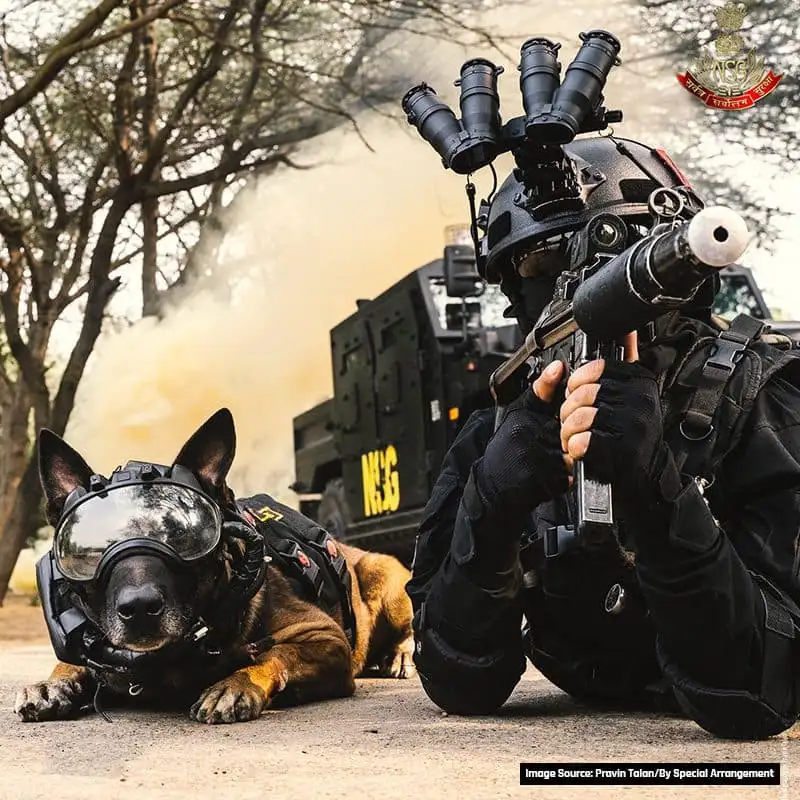Union Home Secretary to Lead Crucial Civil Defence Meet Today; Nationwide Mock Drills Set for May 7
In a decisive step toward strengthening disaster readiness, the Union Home Secretary will lead a high-level meeting today to streamline India’s civil defence efforts. The Ministry of Home Affairs (MHA), through a directive dated May 5, instructed all states and union territories to conduct mock drills across 244 identified Civil Defence Districts on May 7, 2025.

This coordinated exercise aims to test emergency response capabilities, reinforce inter-agency coordination, and promote community-level awareness across the country.
Why These Drills Are Important
India continues to face a wide range of emergencies, from natural calamities like floods and earthquakes to industrial hazards. These recurring threats highlight the need for a proactive approach to disaster management. Mock drills serve as a rehearsal, allowing authorities to practice critical responses, identify loopholes, and fine-tune strategies well before a real crisis strikes.
Moreover, these drills help emergency responders work together more efficiently, ensuring faster rescue and relief operations during actual events.
Drills Tailored to Regional Risks
Instead of taking a generic approach, each district will design its mock drill based on local vulnerabilities. For instance, coastal regions plan to simulate cyclones and tsunamis, while northern states may rehearse earthquake response scenarios. Industrial belts are expected to conduct simulations involving chemical leaks or fire outbreaks.
By customizing scenarios, local agencies can better prepare for the specific challenges they are most likely to face. This method not only enhances realism but also encourages more meaningful participation from both authorities and the public.
High-Level Coordination Underway

The meeting chaired by the Union Home Secretary will include top officials from the National Disaster Management Authority (NDMA), National Disaster Response Force (NDRF), and state disaster management departments. They will finalize operational plans, assign roles, and ensure logistical readiness for May 7.
According to senior ministry officials, the goal is not just to hold a one-off event but to embed these preparedness exercises into routine governance. In fact, the ministry is considering organizing such drills biannually to build a culture of readiness across all regions.
Involving Communities on the Ground
One of the key aspects of this initiative involves encouraging active participation from local communities. The MHA has directed district administrations to engage schools, housing societies, market associations, and non-profits to ensure widespread involvement.
When citizens know how to act during emergencies—whether by evacuating safely, assisting others, or accessing reliable information—the overall impact of any disaster can be significantly reduced. As a result, many states have already launched awareness campaigns and workshops to prepare residents for the upcoming drills.
Volunteers Will Play a Central Role
Civil defence volunteers will be at the heart of these exercises. These individuals receive training in basic rescue, first aid, firefighting, and public safety communication. On May 7, they will help coordinate evacuation routes, assist with rescue tasks, and provide real-time feedback to local authorities.
States have made ongoing efforts to increase the number of trained volunteers, especially in urban districts where population density poses greater risks during emergencies. Their hands-on participation will help make the drills more effective and responsive to ground-level realities.
Learning from Experience
India’s disaster management framework has evolved significantly over the last two decades. However, challenges still remain. Past incidents—such as the 2001 Gujarat earthquake, the 2004 tsunami, and the 2020 industrial gas leak in Visakhapatnam—have shown how delays, miscommunication, and poor planning can cost lives.
These mock drills aim to fix those very issues. By simulating real-time challenges, the drills give officials and communities a chance to reflect, adapt, and improve response mechanisms.
Toward a Culture of Preparedness
In the face of rising climate-related threats and increasing urban vulnerabilities, India must stay ahead by prioritizing preparedness. These nationwide drills reflect a larger push to make disaster response more inclusive, proactive, and efficient.
The Union Home Secretary’s meeting today is expected to produce actionable strategies to ensure the May 7 drills are carried out smoothly and provide meaningful insights. Importantly, it will emphasize accountability, review mechanisms, and follow-up action—ensuring that the exercise doesn’t end once the day is over.
Conclusion
Disasters can strike with little to no warning, but preparation can make all the difference. Through these nationwide civil defence drills, the government is not only testing its response capabilities but also fostering a safety-first mindset at every level of society.
By bringing together officials, volunteers, and citizens in a united effort, India is taking a crucial step toward building a more resilient future—one that relies on preparation, participation, and quick, coordinated action.






